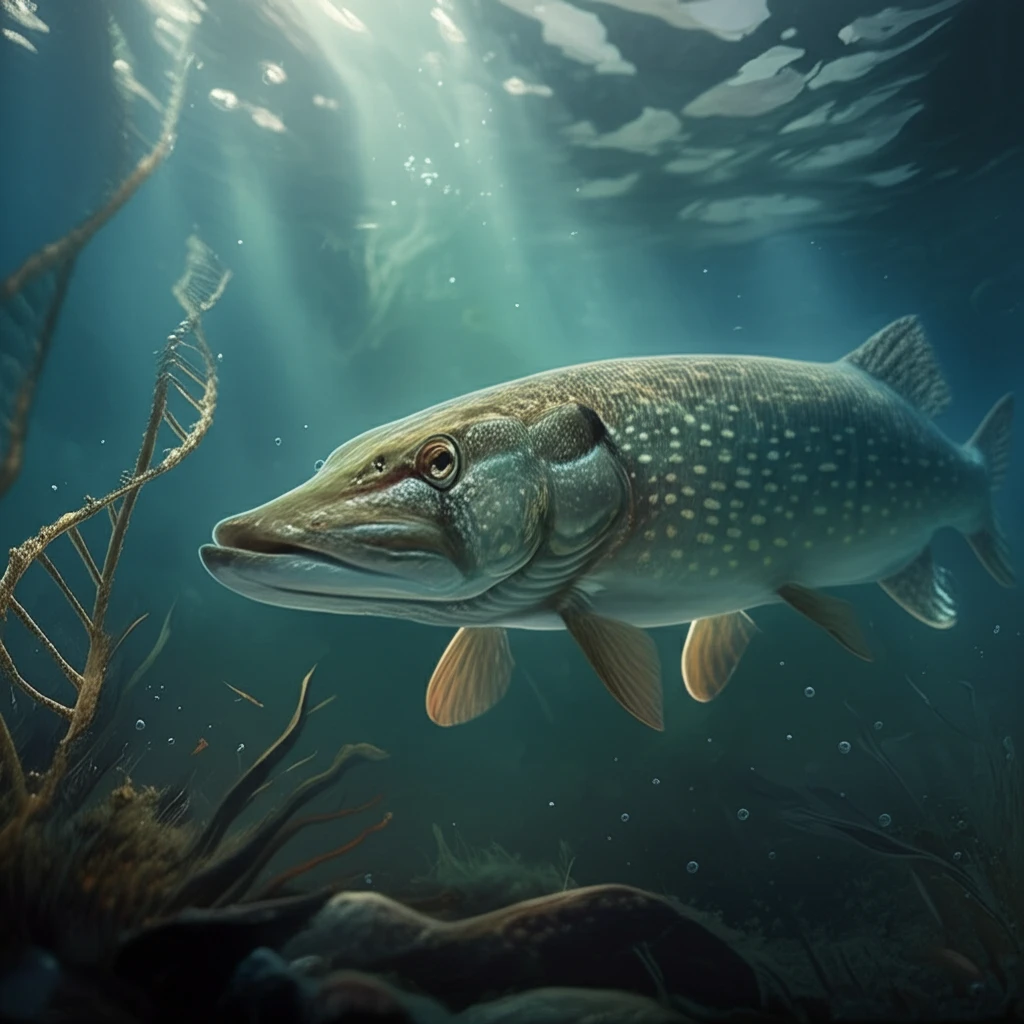
Pike Predicament: Are Fish Stocking Programs Doing More Harm Than Good?
"Uncover the surprising truth about northern pike stocking and its impact on genetic diversity."
For years, fish stocking has been a go-to strategy for boosting wild populations and creating better angling opportunities. But what if this seemingly helpful practice is actually causing more harm than good? A recent study sheds light on the potential downsides of stocking, particularly its impact on the genetic diversity of northern pike (Esox lucius) in a large river system.
The big question is: Does introducing hatchery-raised fish into natural environments lead to genetic changes that threaten the long-term health and resilience of wild populations? The answer is more complex than you might think, involving survival rates, reproduction, and the ability of stocked fish to integrate—or not—with their wild counterparts.
Researchers have been digging into the details, exploring everything from the size of the stocked fish to their degree of domestication, genetic relatedness, and the size of the wild population. Documenting these outcomes is crucial for figuring out whether stocking is a sustainable way to manage fisheries.
The Genetic Gamble: Stocking vs. Wild Integrity

A new study focused on a northern pike population in the Lot River in southwestern France to investigate the effects of stocking. For years, this 130 km stretch of river has been receiving about 1 ton of hatchery-raised pike annually. The goal? To enhance recreational angling. However, scientists wanted to know if this influx of stocked fish was messing with the genetic makeup of the native pike.
- Survival of Stocked Individuals: Do the stocked fish survive long enough to reproduce?
- Reproductive Success: Can stocked fish successfully breed with wild fish?
- Size and Domestication: How do the size and domestication of stocked fish affect their ability to thrive in the wild?
- Genetic Relatedness: How closely related are the stocked fish to the wild population?
Time to Rethink Stocking Strategies?
This research raises important questions about the long-term sustainability of fish stocking programs. While stocking may seem like a quick fix for boosting fish populations and angling opportunities, it can have unintended consequences for the genetic health and resilience of wild populations. More research is needed to fully understand these complex interactions and to develop stocking strategies that balance the needs of both anglers and ecosystems.
